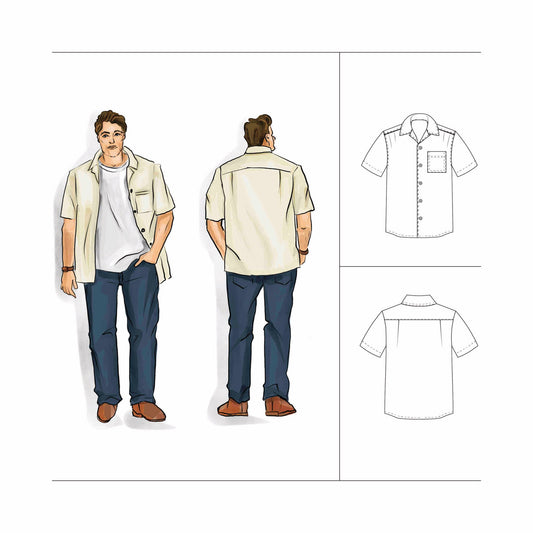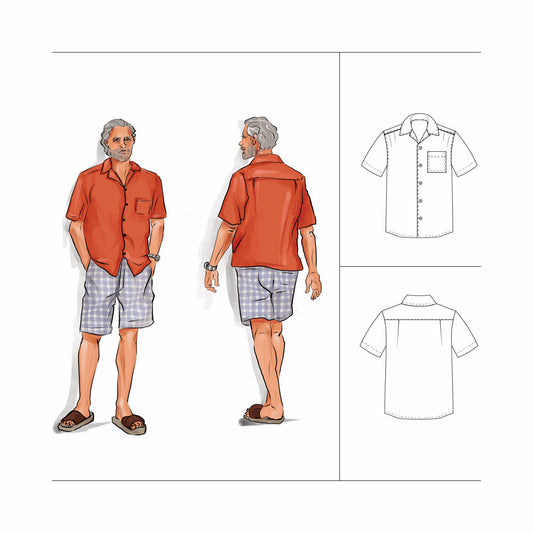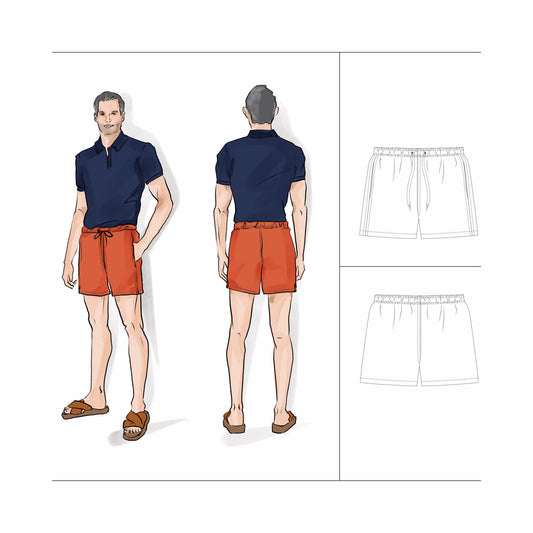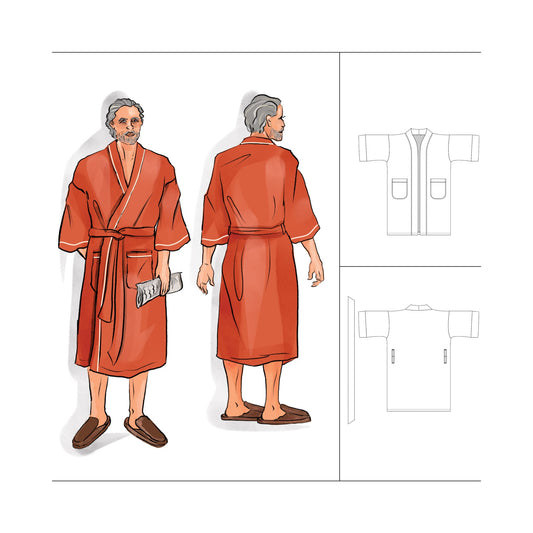When it comes to ties, bow ties, and cummerbunds, the fabric you choose makes a difference.
The right fabric can turn a handmade accessory into a standout piece — one that looks sharp, ties beautifully, and suits the occasion.
Some fabrics naturally suit a formal black-tie event, while others are perfect for Willy Wonker dress up at Halloween.
The good news is, by making your own, you can match the fabric not just to the dress code but to the personality of the person wearing it.
In this guide, I’ll walk you through five top fabric choices for making ties, bow ties, and cummerbunds — and I’ll pair each fabric with the type of occasion where it will really make an impression.
What I cover in this article:
- Why sew a bow tie, tie or cummerbund
- Top 5 fabrics (+ bonus 6th) for bow tie, tie or cummerbund
- How much fabric is needed to sew each
- How to sew a bow tie, tie or cummerbund

Key Takeaways
- Fabric choice sets the tone - The fabric you choose for your tie, bow tie, or cummerbund shapes the overall feel and formality of your finished piece.
- Different fabrics suit different occasions - From silk for black-tie events to linen for beach weddings, matching the fabric to the event ensures your handmade accessories feel right.
- Padding and structure matter - Using the right padding or interfacing gives your accessories a professional finish, helping them tie neatly and sit comfortably.
BUY PATTEN
Why Sew a Tie, Bow Tie, or Cummerbund?
Sewing your own formal accessories gives you complete control over the final look including the fabric, the fit, and the feel.
You can match a suit perfectly, create a coordinated look for a wedding party, or simply craft something that feels more personal than anything you could buy off the rack.
And with over 100,000 global online searches for "bow tie" each month it appears many like this idea, especially around wedding season and prom or formal months. (ahref.com 2024 data)
Ties, bow ties, and cummerbunds are small projects, but they make a big impact.
They're ideal for using beautiful fabrics, showcasing fine details, and adding a handcrafted touch to important occasions.
Best of all, these are projects that don’t take a huge amount of fabric or time — but they create something lasting and meaningful. And you can't help but notice it, so I want you to get it right.
So, let’s take a closer look at the top five fabrics that will help your tie, bow tie, or cummerbund look its best.
Top 5 Fabrics for Ties, Bow Ties, and Cummerbunds
Choosing the right fabric means your accessories will drape, tie, and wear well (assuming you have cut them on the bias).
Here are five of the best and most popular options, along with the perfect occasions to match.
1. Silk
Description:
Silk is the traditional choice for formal accessories. It is smooth, soft, and naturally lustrous without being flashy.
Why it’s great:
It ties easily, holds a beautiful knot, and feels luxurious to wear. Silk gives your accessories a polished, timeless look.
Best occasion:
Weddings, black-tie events, formal galas like school formals, fundraisers and proms.
2. Cotton Poplin
Description:
Crisp, lightweight and breathable, cotton poplin is smooth but slightly structured.
Why it’s great:
It’s easy to sew, holds its shape well and is perfect when you want a cleaner, more modern look without too much shine.
Best occasion:
Daytime weddings, spring and summer events, smart-casual occasions, dress-ups, work and popping down to the shops for a 1/2 dozen eggs.
3. Linen
Description:
Linen offers a relaxed, natural texture with a light and breathable feel.
Why it’s great:
It’s perfect for warmer weather and gives a slightly more relaxed (but still refined) look. Linen adds effortless charm to a formal outfit without feeling too stiff.
Best occasion:
Beach weddings, destination weddings, summer formal events.
4. Velvet
Description:
Rich and plush with a slight shimmer, velvet brings depth and texture to your accessories.
Why it’s great:
It makes a statement without needing bold colours or patterns - keep it plain. Velvet is especially stunning in bow ties and cummerbunds, where the texture can really stand out. But velvet ties are also popular especially when you use a plump Windsor knot.
Best occasion:
Winter weddings, evening events, festive celebrations (like Christmas or New Year’s Eve).
5. Lightweight Wool (or Wool Blend)
Description:
Soft and resilient, lightweight wool or wool blends offer a gentle texture and warmth.
Why it’s great:
It’s structured enough to hold a strong knot but soft enough to feel comfortable. Wool gives accessories a slightly more matte, traditional look and are perfect for cooler weather. The matte finish lends itself to patterned fabric such as a traditional plaid or check.
Best occasion:
Autumn weddings, formal work functions, winter events. I can see it tucked up under a scarf and overcoat off to work.
And I thought I would add an extra one - one that is very popular for black tie events such as weddings.
6. Satin
Description:
Smooth, glossy, and lightweight, satin has a luxurious surface that catches the light beautifully.
Why it’s great:
It brings high shine and elegance to formal accessories, especially bow ties and cummerbunds. Satin is easy to shape and drapes well, giving your pieces a polished finish with dramatic flair.
Tip: Match the bow tie fabric with the tuxedo lapel. That is if the lapel (whether peak or shawl) is satin then make the tie satin too.
Best occasion:
Evening weddings, black-tie events, proms and formal galas.
Bonus Tip: Don't Forget About Padding and Finishing Touches
Choosing a great fabric is the first step, but how you finish your tie, bow tie, or cummerbund matters just as much.
For ties, use a soft padding, such as a lightweight wool, calico and voile (5 star version) or for a more budget version a fleece between 150 - 200gsm.
I provide fabric requirements for a 5 star, 3 star and budget version inside the sewing pattern bundle instructions and tutorials.
Padding gives the tie body, helps it drape well and ensures it forms a smooth, elegant knot.
For bow ties and cummerbunds: use light to medium weight woven interfacing to add structure without stiffness.
The buttons on the cummerbund blend in and are flat, so they don't dig in when sitting.
Hand stitching, especially on the tie, give it a refined professional finish.
FAQs
What is the best fabric for sewing a men's tie?
Silk is the classic choice for sewing a men's tie because it ties smoothly and looks timeless. However, cotton poplin, linen, lightweight wool, and even velvet can all work beautifully depending on the occasion and the look you want. A sixth choice if none of the top five suit, is Satin
Can I sew a tie with cotton fabric?
Yes, you can sew a tie with cotton fabric — especially a crisp cotton poplin or cotton lawn. Cotton ties are ideal for more casual or daytime events and are easier for beginners to sew and tie neatly.
Do I need padding or interfacing when making a handmade tie?
Yes, use padding when making a tie. Padding gives the tie body, helps it drape well, and ensures it forms a full knot. Use interfacing in your bow tie and cummerbund.
What fabric is best for sewing a bow tie?
It depends on the occasion and the season and his style. All of the fabrics I mention work for a bow tie. Silk, cotton poplin, linen, wool and velvet are all excellent choices.
Can I make a cummerbund at home?
Yes, you can absolutely sew a cummerbund at home. Choosing the right fabric like silk, cotton poplin, or velvet and using a lightweight woven interfacing for structure will give your handmade cummerbund a professional look. Other than the fabric and medium weight interfacing you will need a way to fasten it, such as flat buttons or press studs.
Is sewing a tie, bow tie, or cummerbund beginner friendly?
Sewing a tie, bow tie, or cummerbund is a great beginner project. The pieces are small, easy to handle and teach useful sewing skills like topstitching, padding or interfacing and creating a neat finish. All can be made in a morning. With the right pattern and a little practice, you can make formal accessories that look store-bought.
How much fabric do I need to sew a tie, bow tie, or cummerbund?
To sew a standard tie, you’ll usually need at least a 1 metre (or 1 yard) of fabric, but always refer to the pattern as this varies considerably based on length and width. A bow tie typically uses much less — about 30–50cm (or 2 x Fat Quarters) A tie and bow tie are both cut on the bias so use more fabric. A cummerbund needs around 50–70 cm (20–28 inches). These are estimates for a men's size and I recommend you refer to the pattern's Fabric Requirements table in the instructions.
Final Thoughts
- Sewing a tie, bow tie, or cummerbund is a small project that makes a big statement. It is right there in front of you!
- With the right fabric, you can create formal accessories that match the moment and carry a story.
- Regardless of the event, choosing a fabric that feels right for both the occasion and the wearer ensures it will be worn with pride.
How to sew a Bow Tie, Tie and Cummerbund
Are you ready to sew your own?
You can find everything you need inside my Formal Accessories Pattern Bundle — with step-by-step illustrated and video instructions for making a tie, bow tie, and cummerbund that you’ll be proud to give (or wear yourself).
It is available in 4 size ranges: Boy, Youth (Teen), Men and Men Plus.
BUY FORMAL ACCESSORIES SEWING PATTERN










